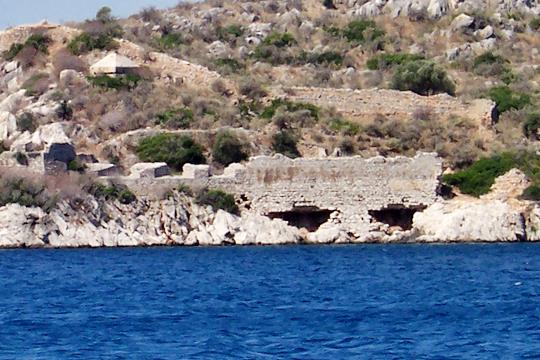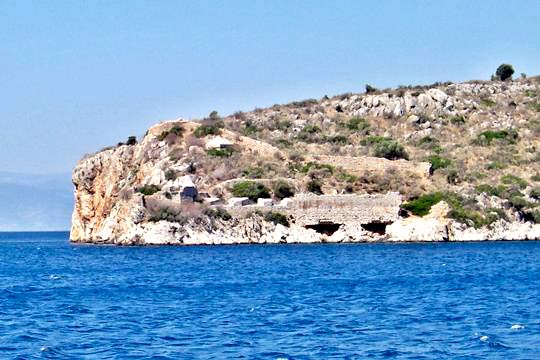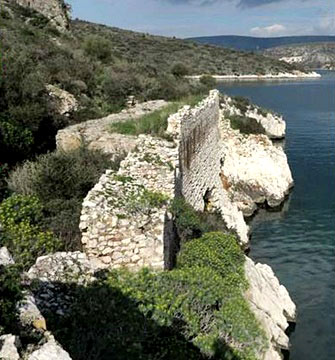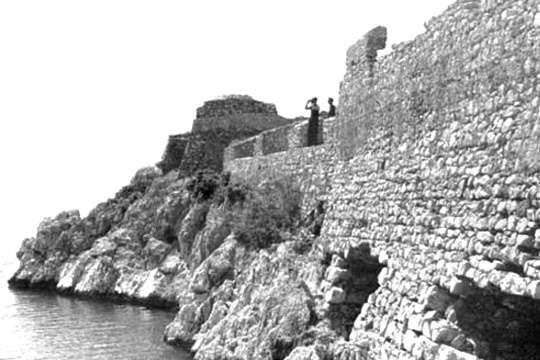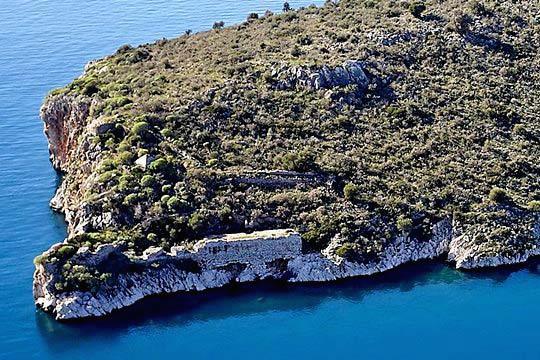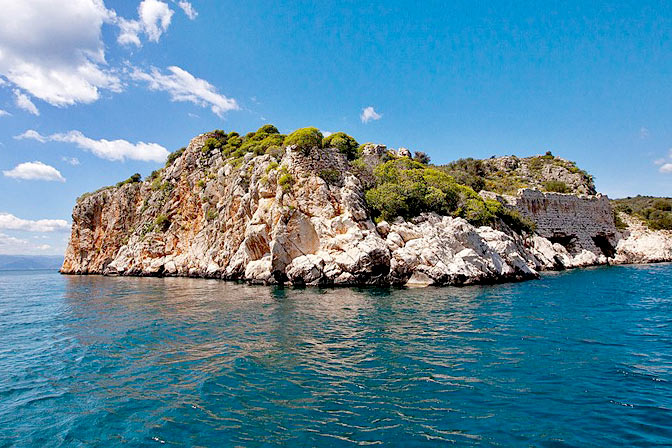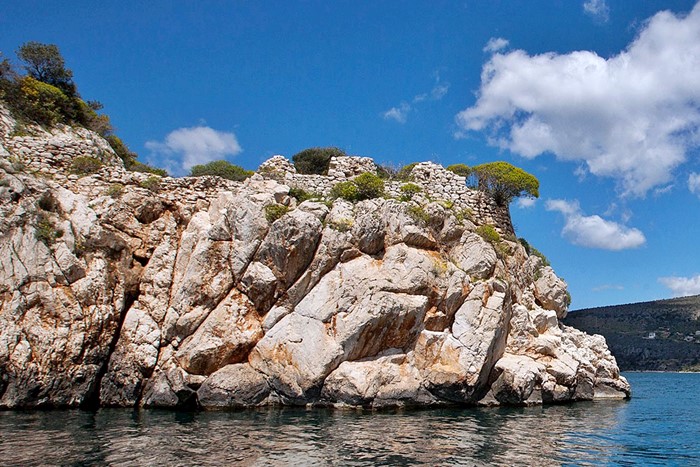Drepano, Nafplion, Argolis,Peloponnese
Fortress of Drepanon
| Location: |
| At the entrance of the bay of lake Chaidari (or Drepanon) at Argolis in W.Peloponnese |
| Region > Prefecture: | 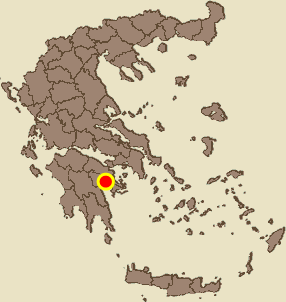 |
| Peloponnese Argolis | |
| Municipality > Town: | |
| City of Nafplion • Drepano | |
| Altitude: | |
| Zero Altitude |
| Time of Construction | Origin | |
| beginning of 18th cent | VENETIAN |
|
| Castle Type | Condition | |
| Coastal Fortress |
Not Good
|
A small coastal Venetian fortress on the western side of the entrance of the bay of Drepanon in Argolis.
History
The fortress was built in the beginning of the 18th century, before 1714.
During the second Venetian period of Peloponnese (1688-1715) the Venetians built some new fortresses (a notable example is Palamidi). One of them was the fortress of Drepanon.
In a 1701 report, the Provveditore Generale Francesco Grimani informed the Venetian Senate on the unique position of Drepanon bay (Porto Trapano), urging the need to secure the harbor.
The initial plan was to build a 3-points system of fortification based on either side of the bay’s mouth and on the island of Platia opposite. From this plan, only the fort on the western side was built.
In 1714, the Provveditore Agostino Sagredo mentions in his report the building of a fort big enough for 28 pieces of artillery to protect ships undergoing dry-dock repairs.
The Ottomans, who recaptured Peloponnese in 1715, probably never manned the fort, but might have used it occasionally.
Structure, Fortification & Buildings
Drepanon is a sickle-shaped inlet stretching 2km parallel to the sea behind a long arm of land, entered by a narrow mouth at the eastern end.
The fort stands at the tip of the western arm. Six gun enbrasures face east across the bay’s mouth and four on the side of the open sea.
It is built on a slope of rock directly over the water. On the east and south are the two embrasured flanks, built with battering walls. A cistern is built against the wall on the east, providing a gun platform reached by steps from a lower level behind it.
The upper section of the fort is a platform built on the higher level of the rock , held in by a battering retaining wall. Near the top is a square pyramidal-roofed chamber resembling a vardiola. Probably it was a watchtower.
The upper apex of the fort is occupied by a small irregular platform from which descends a wall, battering both inside and out, with parapet and chemin de ronde in the line of a Z to another round platform on the water, facing the interior of the bay.
| First entry in Kastrologos: | June 2013 |
Sources
- Kevin Andrews, Castles of the Morea, 1953
|
|
| Access |
|---|
| Approach to the monument: |
| Better to visit by boat from Tolo |
| Entrance: |
| Like most remote, ruined and neglected fortifications, entrance is not an issue. The difficult part is to approach the castle and walk around inside. |



